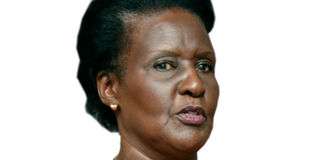Is Africa ready for industrialisation?

Ms Kyambadde is Minister of Trade, Industry and Cooperatives. FILE PHOTO
What you need to know:
Optimistic. Africa has potential to industrialise and liberate its peoples from poverty. This can be achieved through integration... Africa is ready for industrialisation and will be the global industrial and investment hub
Africa is bedevilled with negative perceptions perpetrated by detractors, exploiters, colonialists and even Africans ourselves. Red flags of conflicts, diseases, famine, backwardness, wars and under-development have been flaunted in our faces.
However, Africa’s trajectory of an Industrial Revolution started in the 15th Century with barter trade; blacksmithing, rudimentary mining, and agriculture. Africa is a land of opportunity, well endowed with natural resources necessary for resource-based industrialisation. It sits on more than $82 trillion of discovered natural resources, with potential to contribute $30 billion a year in government revenues over the next 20 years.
Africa’s landmass is also home to five of the main 30 oil-producing nations in the world. Nigeria, Algeria, Egypt and Uganda are some of them. Africa’s wealth of mineral resources includes gold, diamond, copper, platinum uranium, iron, steel and many others. Mineral beneficiation is key, though capital intensive.
African revolutionaries such as Dr Kwame Nkrumah, Julius Nyerere, Jomo Kenyatta, Patrice Lumumba and others embarked on the industrialisation process through construction of hydro-power dams: Aswan High dam in Egypt constructed in 1961, with a capacity of 2,100MW per annum; Akasombo Dam in Ghana, constructed in 1961, with a capacity of 912 MW per annum; Bujagali dam in Uganda constructed in 2007, with a capacity of 255MW per annum and Cahora Bassa in Mozambique constructed in 1974, with a capacity of 2,075 MW per annum.
Ironically, only two out of every 10 Africans consume energy and Africa has the lowest electricity consumption capacity of only 450KW per hour.
Africa is the world’s second largest and second most-populous continent, with 11.7 million square miles. It covers 60 per cent of the world’s arable land, but 79 per cent of it is uncultivated. Africa has 9 per cent of the world’s fresh water resource and has a comparative advantage in production of coffee, tea, spices, cotton, maize, rice, fish and sugar.
Africa has constructed an optic fibre cable connecting the whole continent and 21.8 per cent out of 40.3 per cent of its youth access the Internet. It has also developed a strong legal framework in democracy, investments, human rights, among others.
Most African countries have stabilised and through the African Union, there are continued efforts for peace building in some of the unstable States.
As observed above, all these efforts give Africa a strong foundation to further integrate and industrialise. Therefore, the Africa Continental Free Trade Area (AfCFTA) is the panacea to the existing gaps in the continent’s road to industrialisation.
The above socio-economic indicators illustrate Africa’s potential to industrialise and liberate its peoples from poverty. This can be achieved through integration. It is the reason 44 Member States out of 55 signed an agreement establishing AfCFTA in March 2018 in Kigali, Rwanda. The agreement establishes a single market of 1.2 billion people, with a combined GDP of $3.4 trillion. The AfCFTA is one of the vehicles to catalyse Africa’s development by breaking down trade barriers between the countries.
Presently, 49 countries have signed the agreement and 11 have ratified; Uganda, South Africa, Kenya, Ghana, Sierra Leone, Niger, Chad, Rwanda, Guinea, eSwatini (former Swaziland) and Cote d’Ivoire. The agreement will come into force after 22 countries ratify.
Uganda was elected current AfCFTA chair of the Forum for African Ministers of Trade during the meeting of the African Union Ministers of Trade in Dakar, Senegal in June for one year.
Uganda stands to benefit from AfCFTA because the country provides expanded market for our growing economic operations; attracts cross-border investment; creates employment opportunities arising from the growing production and market of goods and services.
Uganda targets value-added products in high potential industries such as livestock notably dairy and beef; coffee, tea, iron and steel, among others. Services include education, tourism, business and infrastructure.
There has been an increase in industrial growth in Uganda. The industrial sector contribution to GDP grew from 3.4 per cent in 2016/17 to 19.8 per cent in 2017/18 at a rate of 6.2 per cent, with manufacturing alone contributing 8.2 per cent. Government has also undertaken massive infrastructure projects in energy, roads, ICT to provide a stable backbone for further industrial development.
Therefore, given the foregoing, Africa is ready for industrialisation and will be the global industrial and investment hub. Let us believe in ourselves.
Ms Kyambadde is Minister of Trade, Industry and Cooperatives
[email protected]




